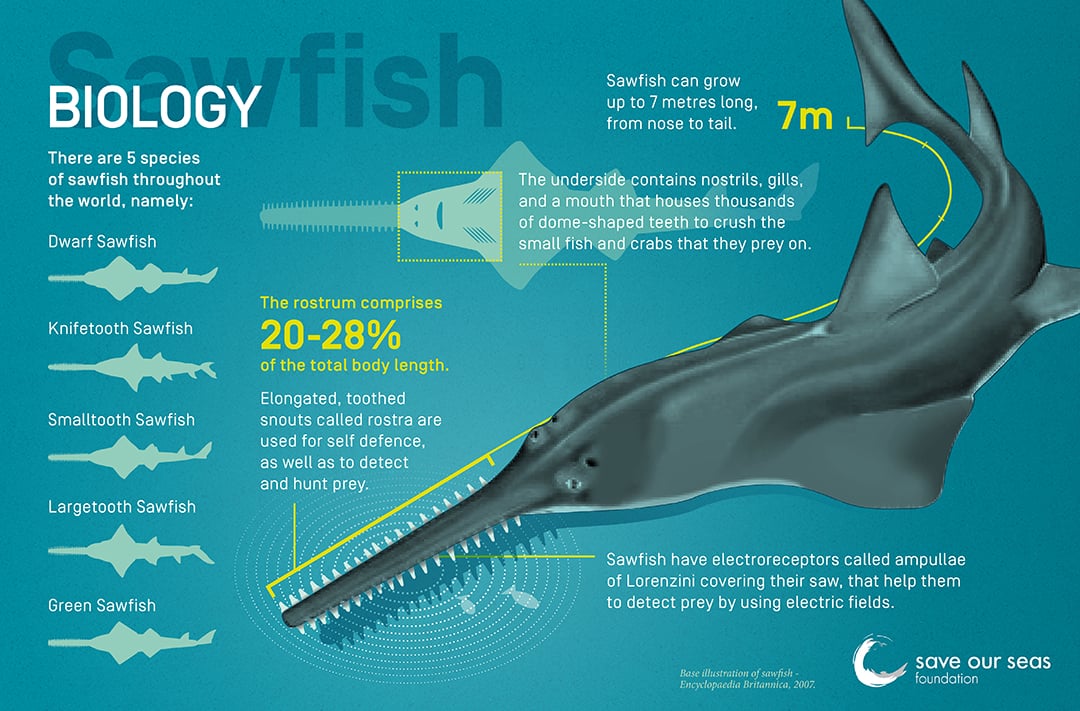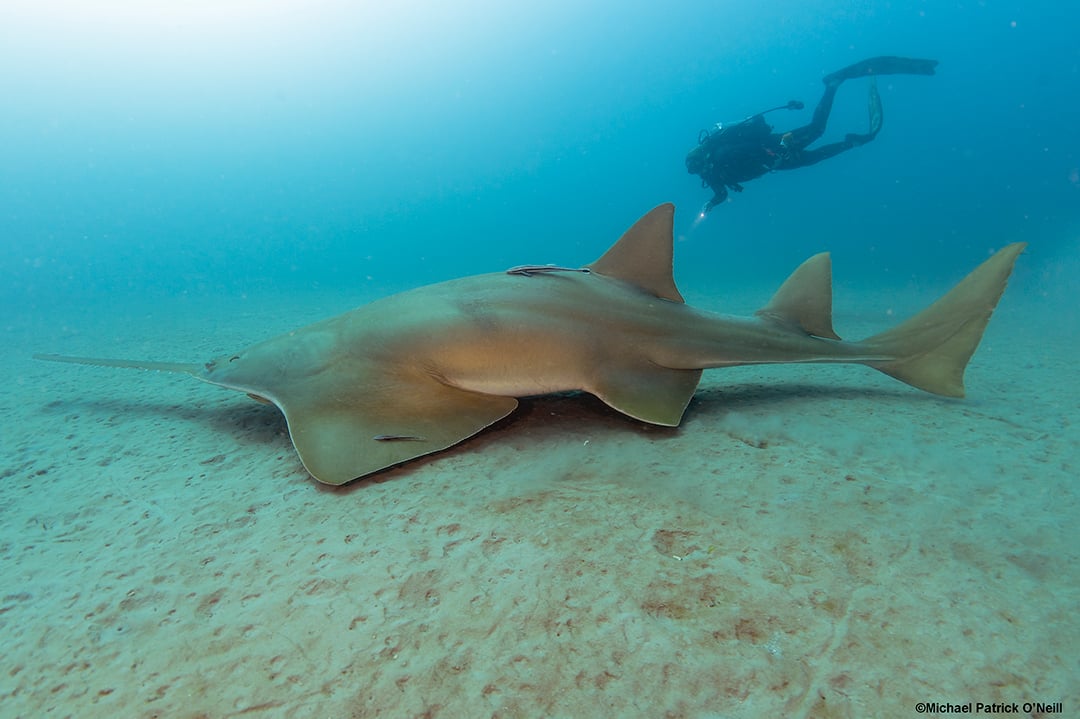Sawfish Biology
17 October 2017 marked the first annual International Sawfish Day, dedicated to increasing knowledge and awareness of sawfish throughout the globe (follow along on social media #IntlSawfishDay). In celebration of this initiative, SOSF has rolled out five informative and educational web articles about one of the ocean’s most critically endangered groups of elasmobranchs. Topics included; Sawfish Biology, Sawfish Habitats, Cultural Significance of Sawfish, Sawfish Threats and Sawfish Conservation.
 The basics of sawfish biology
The basics of sawfish biology
Sawfish are often confused as a species of shark due to their similar body structures; but they are actually more closely related to rays. The underside of sawfish contain nostrils, gills, and a mouth housing thousands of dome shaped teeth which are used to crush the small species of fish and crabs they prey on. Comparatively, sawsharks, another species of elasmobranch often mistaken as a sawfish have gills on their sides.
There are five species of sawfish throughout the world including, dwarf sawfish, knifetooth sawfish, smalltooth sawfish, largetooth sawfish and green sawfish.
Sawfish rostrum — a fascinating biological function
SOSF project leader, Barbara Wueringer has been studying sawfish in Northern Australia since 2006. Barbara is investigating the role sawfish play in local ecosystems by working alongside citizen scientists to raise awareness about their unique biological structure and the habitats in which they live.
Visually, the animals Barbara studies are breathtakingly striking thanks to their elongated, toothed saws called rostra. Sawfish have evolved to utilise these rostrum as a means to defend themselves, as well as detect and hunt food sources.
Different feeding behaviours displayed by a captive juvenile freshwater sawfish
‘Sawfish use their saw both to sense and manipulate prey’, said Barbara. ‘In comparison, the paddlefish only uses its rostrum to sense prey while the marlin uses its rostrum solely to manipulate prey.’
‘With the saw, sawfish can sense visually concealed prey in murky waters,’ Barbara elaborated. ‘Once prey is detected, sawfish will swipe with their rostra. In juvenile largetooth sawfish (Pristis pristis), the swipes can easily split a fish in half. The shape of the saw has also likely evolved in order to be undetectable, as it creates hardly any water movement.’

A diver off of the coast of Florida is dwarfed by a critically endangered Smalltooth Sawfish.’ Photo © Michael Patrick O’Neill
Importance of understanding sawfish biology
With a lifespan stretching somewhere between 25 and 30 years, certain species of sawfish can grow up to seven metres and tend to reach sexual maturity at a very late age (around 10 years). They also have a low reproductive rate, making them vulnerable to overexploitation.
‘These first ten years of their lives are critical’, said Barbara. ‘They spend this time in rivers, trying to avoid fishermen, saltwater crocodiles and bull sharks.’
For researchers like Barbara, it is important to understand things like reproductive biology as it provides context for important lifecycle stages which can aid in conservation efforts.
‘Sawfish are an animal that inspires awe in everyone who is lucky enough to encounter it,’ Barbara concluded. ‘Losing animals like this also means that we are losing a part of nature that is highly important for human happiness.’
To learn more about Barbara’s research, check out her project page here. Explore SOSF’s 11 sawfish research and conservation projects here.
